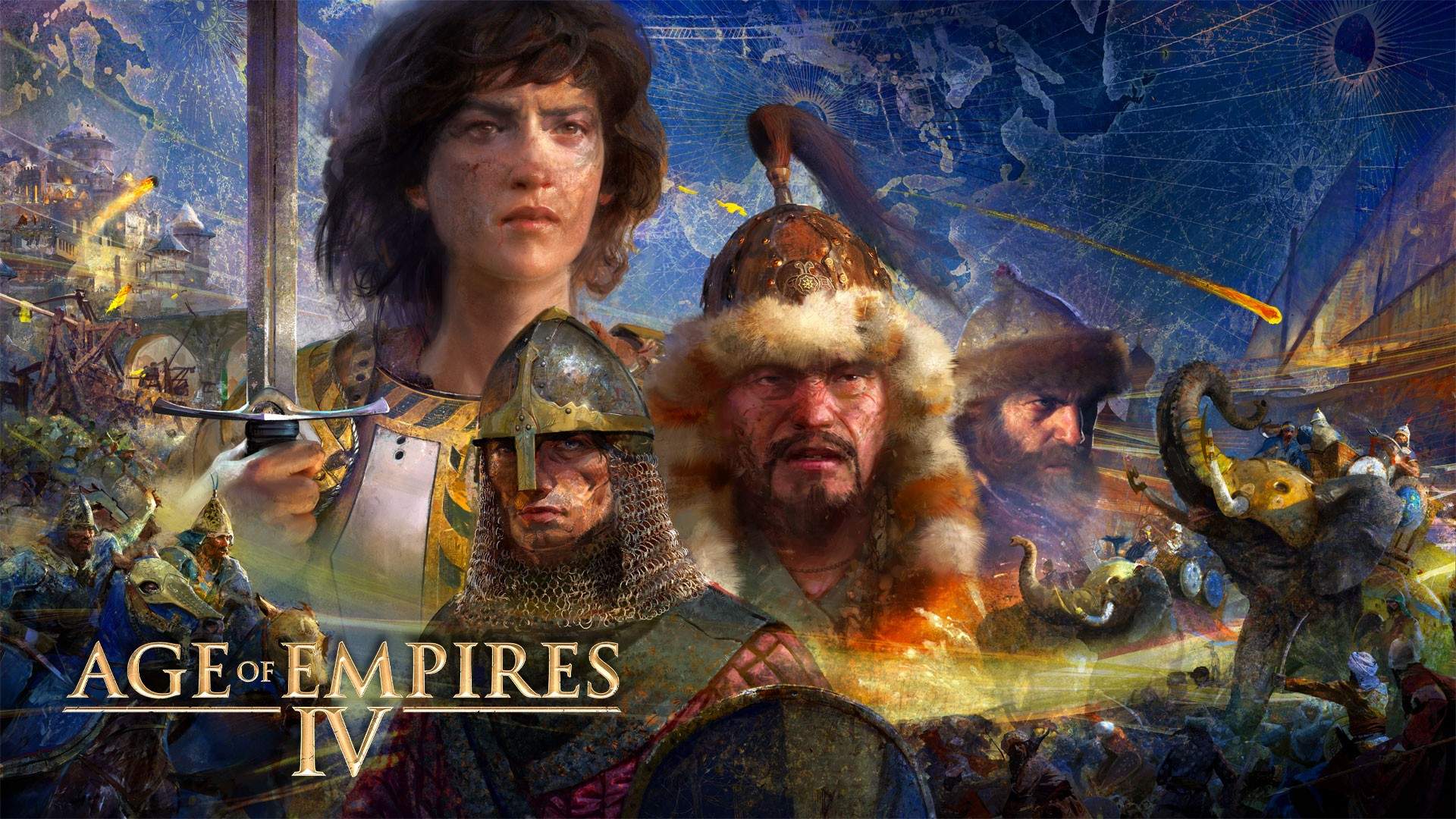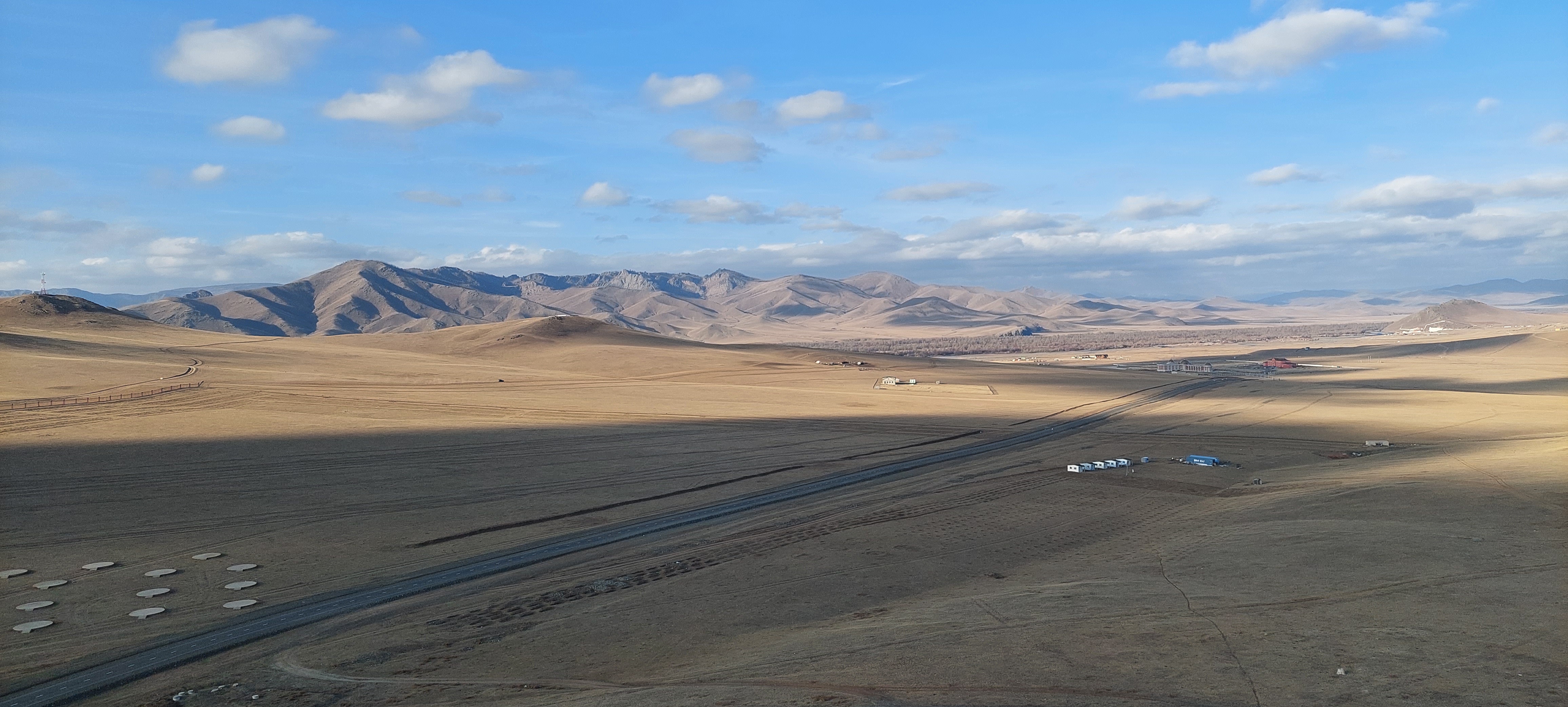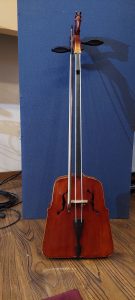Music of the Mongol Civilization
Tilman Sillescu and Steffen Brinkmann share what it was like working with Relic on this groundbreaking soundtrack.

Project: Age of Empires IV
Client: Relic Entertainment, World’s Edge
We Did: Music Composition • Orchestra, Choir, Soloist Recordings
Age of Empires IV has hit the world like a horde of mighty Mongolian horse archers with their packed-up supply chain following behind them. Since its release, the game has been nominated for several awards, One of the areas highlighted often in reviews and Steam comments is the soundtrack.
Dynamedion composer Tilman Sillescu was in charge of the main theme and trailer music, as well as the main in-game music for the Mongols and Holy Roman Empire civilizations. Steffen Brinkmann, another member of the Dynamedion team, was onsite in Mongolia to help coordinate with the musicians there.

A crash course in Mongolian music
Tilman is no stranger to recording European medieval music, so working with the Holy Roman Empire music was not out of the ordinary for him. He naturally had a much stronger impression writing music for the Mongols soundtrack. “It was really exciting to dive into this a bit,” Tilman said. “I had to learn new things, especially for the Mongols civilization: which instruments were used there, how do they sound, how do you play them? Which harmonic and melodic structures are the basis of this music and how has the music developed over centuries, all this I had to learn first.
“Throat singing I knew before only superficially, also here there are some rules to learn – you can’t just write down any melody and expect the singer to be able to do that with throat singing. But it was a really interesting experience to notate music for the Mongolian artists in Ulaanbaatar – sometimes the result was something slightly different, but that’s what made the music even more… Mongolian. And as I said, I learned a lot.”
Learning new instruments
To write the orchestrations, Tilman had to read up and study about the unique instruments of the culture. There was the morin khuur, the ikh khuur, the tsuur flute and the yoochin. For each, Tilman discovered that there were some Western analogs, which gave him insight to writing for the instruments. The ikh khuur shares some similarities with the cello, for instance, as the tsuur does also with Western flute.

“Morin khuur, for example, is a little bit like a Mongolian version of the Western orchestral violin,” Tilman explains, “so it was my task to write action music for morin khuur orchestras, which was cool and later sounded wonderfully original and ancient-rough during the recordings, it was a great fit for the battle scenes.”
Tilman first worked things out on the computer using virtual instruments while his orchestrator, David Christiansen, would write everything down so the musicians could read and play it. “With the orchestra and choir recordings there were no surprises,” Tilman said. “I’ve been doing that for many years, but with the soloists there were always improvisational parts and there you can always be surprised as a composer what the musicians themselves feel about music and improvise. They then play to my playback and we record numerous takes. Afterwards, I see which passages and phrases fit my music the most and select the best ones.”
Recording on location in Mongolia
All the Mongolian instruments were recorded on location in Mongolia. Tilman was himself unable to go on-site. But in this day and age, it was not such a problem. “There is such technology now that you can be connected remotely from your own workstation and follow the whole session and also intervene,” Tilman explained. “I’m then connected to our guy on site and give my two cents, say if a shot is good enough for me or what I’d like different. It’s become a comfortable world since the Internet, but also a bit more boring – my colleague Steffen Brinkmann was our man in Ulaanbaatar when we were shooting in Mongolia, and I envied him a bit that he was allowed to travel there.”
Steffen was there on location in Ulaanbaatar to coordinate with the Mongolian State Morin Khuur Ensemble. “It was an incredible adventure to be in Ulaanbaatar for these recordings, spending time with the musicians and learning about the unique Mongolian culture,” Steffen continued. “We recorded in December which meant that Christmas decorations were all over the studio. It also meant that it was terribly cold outside – temperatures dropped below -30°C one night. Still, I got a chance to get to know Mongolia a bit. The wonderful people I met, the breathtaking landscape and the beautiful music of Mongolia have a special place in my heart now. We have done more recordings in Mongolia since then, and I’d love to visit again in the future. Still hoping for a project to take me there in summer one day.”
The Budapest orchestra
The orchestral parts were recorded in Budapest, with David doing the coordination on the ground. They keep in touch with him via Skype and follow the sessions together. Tilman regularly works with the musicians in Budapest. “The musicians there so often play soundtracks: They read their notes and immediately understand what’s going on. I used to go to Budapest very often myself, and I really like the city. I think I’ll go there live again next time, because while I’m talking so positively about remote work here, I realize how long it’s been since I’ve been there myself, and that it’s actually much better to be on location anyway.”
The real meat of the work came a “It’s the hardest part,” Tilman says. “Putting all the recorded material together after we got the mixes from the recording studios. We put together orchestra, choir, a few ensembles, soloists, solo singers, percussion, it really is a lot to choose and to sort. I kind of like it however, as it is a little bit like watching a beautiful plant grow.”
Working with Relic
All the composers have raved about working with Relic, and Tilman was no exception. “Working together with Relic was really fantastic! Lin Gardiner [Relic’s Music Lead] was so well prepared for everything, still she treated us always with so much respect and empathy, we all felt that this was very nice teamwork over a long time on this project!”
Age of Empires IV is available on Steam and the soundtrack is available as part of the Age of Empires IV Digital Deluxe Edition. Check it out today! Stay tuned to our blog for more interviews from those involved with the soundtrack.
FIRST REACTIONS
“…amazing job, seriously. The ingame music is a Masterpiece. It gives you chills, it lets you feel heroic, it sets the mood, the tone. Rarely I have seen anything comparable…Well done.”
•
“Sound design and music design of this game is astounding… 10/10”
•
“The voice acting and music in this game is just 🖤“
•
“EXCELLENT JOB to everyone involved in music and sound.“
Are you also interested in working together with Dynamedion? Check out our services and tell us more about your project!




